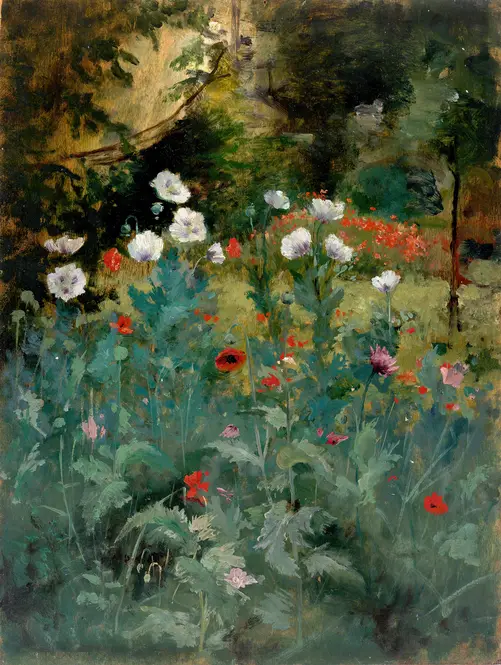Eliphalet Fraser Andrews
Eliphalet Fraser Andrews (1835–1915), American, Though not a household name today, this 19th-century American painter carved out a quiet but distinctive niche with his landscapes and genre scenes. Working primarily in oils, his style blended the detailed realism of the Hudson River School with a softer, more intimate approach—less grandiose than Church or Bierstadt, but equally attentive to light and atmosphere. Andrews often depicted rural life and quiet corners of nature, favoring muted palettes that conveyed stillness rather than drama. His brushwork could be precise in foreground details yet loose in distant elements, creating a sense of depth without rigidity.
Trained at the National Academy of Design, he exhibited regularly in New York and Boston but avoided the self-promotion of his peers. Later works suggest an interest in Tonalism, with hazier, moodier compositions that leaned into ambiguity. While he never achieved major patronage, his paintings occasionally surface in regional auctions, prized for their understated elegance. What lingers in his best pieces is a quietude—an unforced reverence for overlooked moments, like the glow of twilight on a weathered barn or the hush of a snow-laden field. Critics of his era sometimes dismissed him as "too modest," but that very restraint feels refreshingly modern now.
Trained at the National Academy of Design, he exhibited regularly in New York and Boston but avoided the self-promotion of his peers. Later works suggest an interest in Tonalism, with hazier, moodier compositions that leaned into ambiguity. While he never achieved major patronage, his paintings occasionally surface in regional auctions, prized for their understated elegance. What lingers in his best pieces is a quietude—an unforced reverence for overlooked moments, like the glow of twilight on a weathered barn or the hush of a snow-laden field. Critics of his era sometimes dismissed him as "too modest," but that very restraint feels refreshingly modern now.
-

Poppies
Eliphalet Fraser Andrews (American, 1835–1915)A vibrant study of poppies, alive with textured brushwork and luminous color, capturing nature’s fleeting beauty.